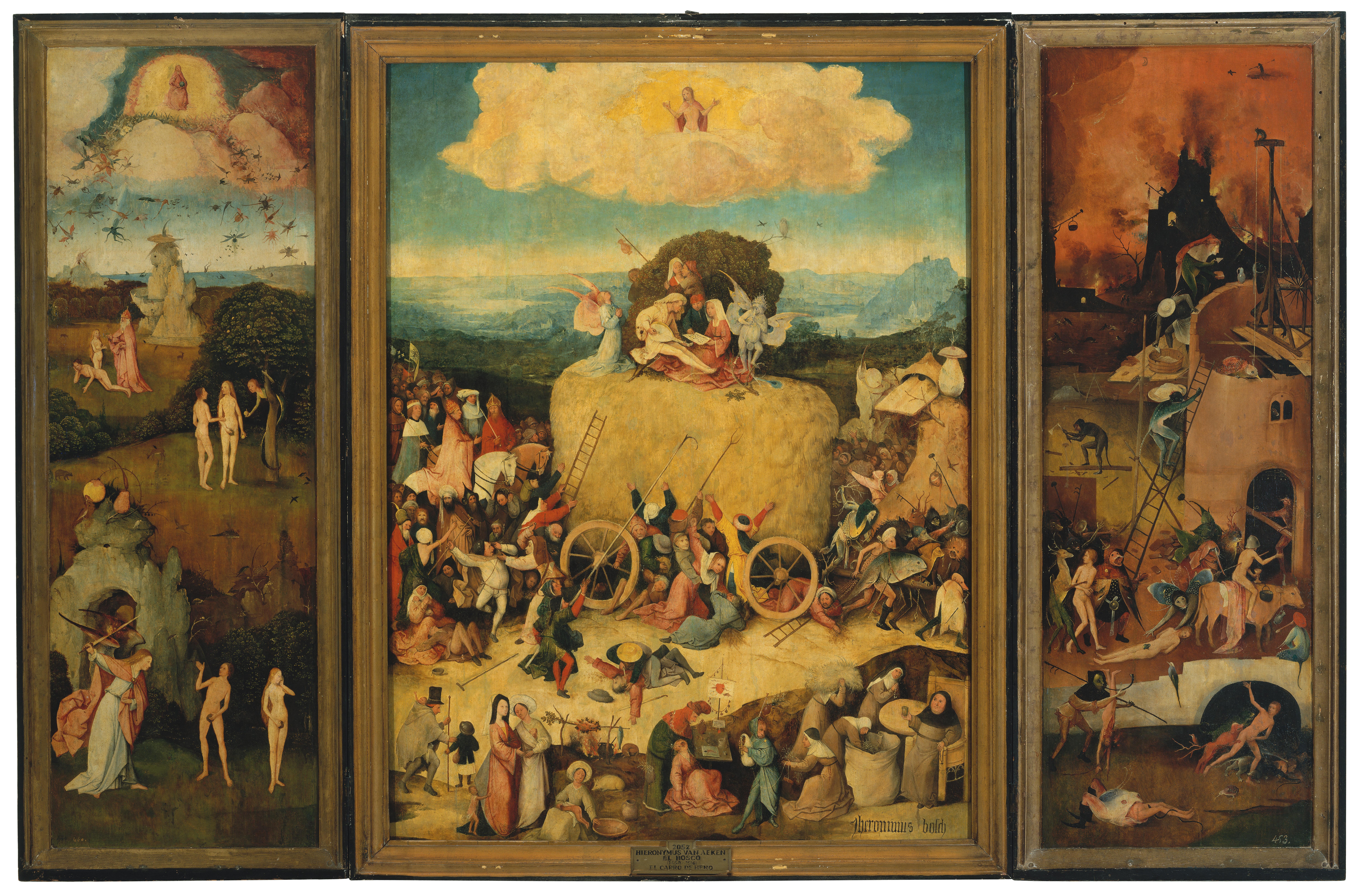To begin with, the left panel starts from the top with God throwing out the angels who betrayed him. As they fall, the angels turn to insects. Next, God creates Eve from Adam's rib. This particular scene bears very similar resemblance to the Garden in that God appears to favor Eve more than Adam as he lays helpless on the ground. After that, Adam and Eve meet the serpent under the tree and partake in the fruit. Finally, an angel casts Adam and Eve out of the Garden of Eden. Looking at Eve in the final scene, she appears to be looking left at the next panel and is worried about what's to come.
The center panel most likely represents the modern world. Here many scenes of sin occur. There is murder right on the ground, a man who would appear to represent the sin of gluttony sits on the bottom right corner, and a cluster of peasants who are grabbing every shred of hay they can off the wagon to represent greed. Very clearly, God is portrayed at the top of the scene; however, only the angel is looking up at him from atop what appears to be a wagon of some kind. Everybody else is ignoring God, thus putting more emphasis on the sin aspect of the modern world at that time. Also, the wagon-like object appears to be moving towards the right panel. Oddly enough, there is a mixed scene between the middle and right panels that occurs on the right side of the middle panel. Here, humans appear to be morphing into animals and other strange beasts. The metamorphosis of the humans further illustrate how mankind is losing God and becoming more like the beasts that posses no God. Plus, the human-beasts appear to be pulling the wagon and humans into the next scene.
The right panel, just like the Garden, is Bosch's interpretation of hell. All kinds of pain and suffering are depicted here. From a man being impaled by a spear to a two-legged fish creature devouring another man, all sorts of paranoia are present. Towards the right side of the panel, it would appear that animals are building a home or shelter as if to tell the humans that hell is their home now. Surely, this piece would strike fear into the hearts and minds of faithful Catholics during Bosch's time.

No comments:
Post a Comment